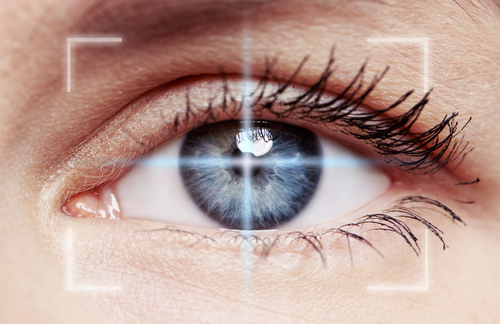Visual Hallucinations Linked to Retinal Thinning in Parkinson’s, Study Reports

Visual hallucinations in people with Parkinson’s disease are associated with a thinning of the inner layers of the eye’s retina, an exploratory study reported.
Published in the journal Nature Scientific Reports, the study was titled “Visual hallucinations in Parkinson’s disease are associated with thinning of the inner retina.”
Such hallucinations are common in people with Parkinson’s, yet the underlying mechanisms remain unknown.
Studies have demonstrated that, in the retinal layers, Parkinson’s patients have both a deficiency in the neurotransmitter dopamine and a buildup of abnormal alpha-synuclein protein. Both of these irregularities are underlying pathologies, or disease causes, in Parkinson’s, and may lead to a loss of cells and thinning of the retina, the innermost layer of the eye that senses light and sends images into the brain.
Whether retinal thinning is associated with visual hallucinations in people with Parkinson’s has not been fully addressed.
Now, investigators based at the Onze Lieve Vrouwe Gasthuis (OLVG) Hospital — the city hospital of Greater Amsterdam — in the Netherlands designed an exploratory study to determine if there is a connection between visual hallucinations in Parkinson’s patients and thinning in two outward-facing retinal layers, the ganglion cell layer (GCL) and the inner plexiform layer (IPL). Possible associations between hallucinations and visual acuity, or sharpness of vision, were assessed as well. Of note, visual acuity is usually measured by the ability to determine letters or numbers at a given distance.
A total of 40 people with Parkinson’s — 28 men and 12 women, with a median age of 71 — were included in the study, along with 22 age- and sex-matched healthy individuals (controls).
All participants were interviewed by a neurologist to determine the presence of visual hallucinations and underwent an eye examination, which included a vision test (best-corrected visual acuity or BCVA) as well as optical coherence tomography. That non-invasive imaging test uses light waves to take cross-sectional pictures of the retina, focusing on the combined ganglion cell and inner plexiform layers (GCL-IPL).
The analysis found 14 patients (35%) had such hallucinations. Three had minor hallucinations such as visual illusions or peripheral hallucinations, and the remaining 11 had complex visual hallucinations, such as seeing small animals or persons or a combination of both.
Visual hallucinations occurred daily in half (50%) of these patients, weekly in 25%, and monthly in 25%. Compared with patients without hallucinations, those who experienced these false visual images were older and had more cognitive impairment, as measured by the Montreal Cognitive Assessment (MoCA) and an executive clock drawing test (CLOX1).
Moreover, those who experienced hallucinations were found to have worse motor function, more advanced disease, and a higher levodopa equivalent dose (LED), or the combined dose of all Parkinson’s medicines. Motor function was defined by higher motor scores on the MDS-Unified Parkinson’s Disease Rating Scale (MDS-UPDRS), which assesses disease severity and progression, while disease stage was determined by higher Hoehn and Yahr ratings, which also measures symptoms.
While visual acuity was found to be lower in Parkinson’s patients compared with controls, there were no significant differences in combined ganglion cell layer and inner plexiform layer measurements between the two groups.
“A lack of power (small sample size) may also have contributed to the absence of a significant difference in GCL-IPL measurements between the [Parkinson’s disease] group and the control group,” the researchers wrote.
Within the Parkinson’s group, visual hallucinations were significantly associated with the thinning of the two retinal layers measured. This relationship remained after adjusting for age, LED, disease stage, and cognitive function.
However, there was only a non-significant trend between hallucinations and visual acuity after these same adjustments. Furthermore, after correcting just for age, there was no association between hallucinations and worse vision.
Thinner retinal layers correlated with lower global cognitive function scores (MoCA). Moreover, later disease stages associated with worse visual acuity, more visual hallucinations, and trended with increased retinal thinning.
“In conclusion, in patients with [Parkinson’s disease], visual hallucinations appear to be associated with a thinning of the inner retinal layers and, possibly, with reduced visual acuity,” the researchers wrote.
“Further research using a longitudinal (over time) design is necessary to confirm these findings and to establish the causality of these relationships,” they added.






